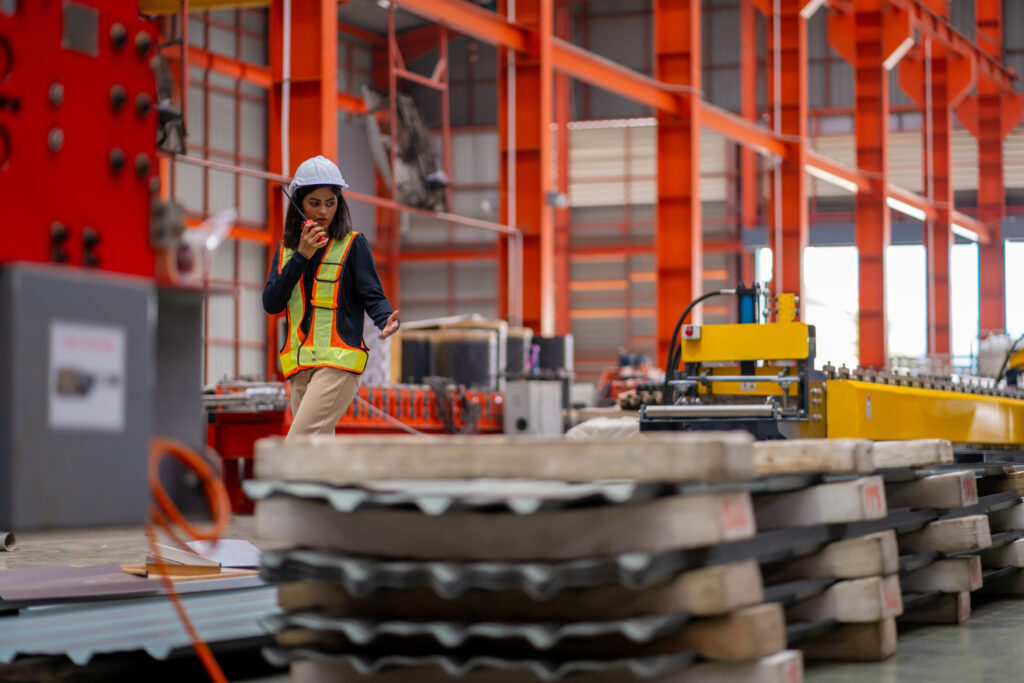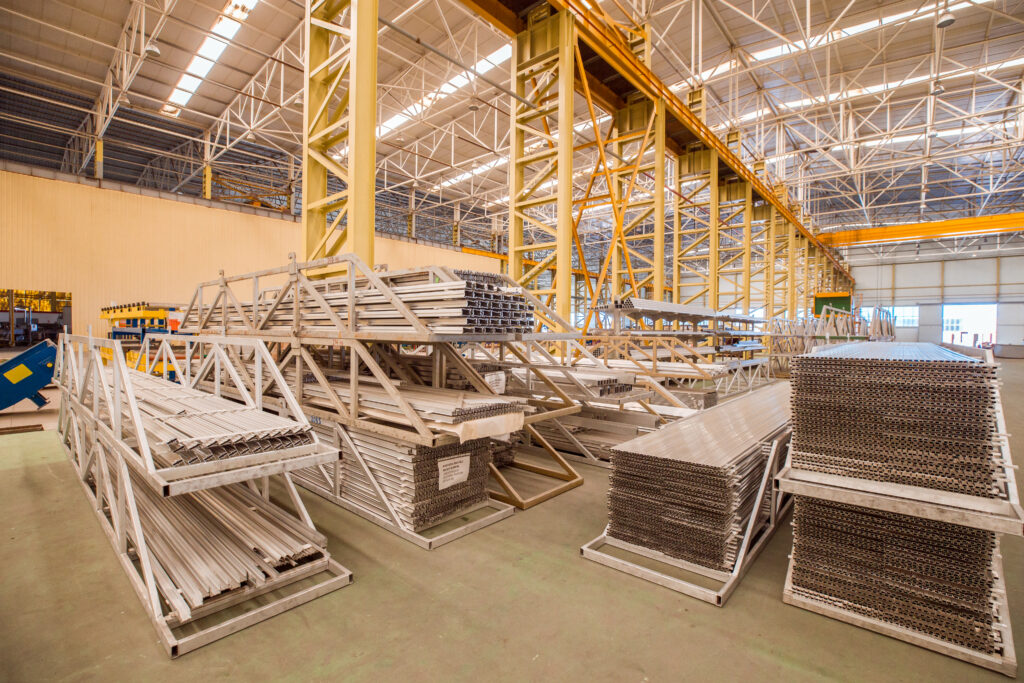The Hidden Costs of Poor Material Quality — And How to Prevent Them

The Hidden Costs of Poor Material Quality — And How to Prevent Them For the building materials sector, raw material quality determines the strength, safety, and sustainability of each project. Although low-cost materials might seem cheap at first, low-quality materials typically have hidden expenses that threaten profit margins, reputations, and ESG targets. For contractors, suppliers, and construction businesses, an investment in quality is not merely about compliance—it’s a business imperative. At POSITIIVPLUS, we enable businesses to make better sourcing and compliance decisions using sustainable tools and services. In this post, we will reveal the actual costs of low-quality materials and provide actionable steps to avoid these issues in the building material supply chain. The Hidden Costs of Poor Material Quality Increased Rework and Project Delays Low-grade materials tend not to meet design or safety requirements, resulting in rework. Not only does this add to labor cost but also project delivery time—potentially resulting in penalty and loss of customer confidence. Increased Waste and Environmental Footprint Poor quality materials tend to crack, warp, or degrade rapidly. This creates unnecessary waste, which contributes to disposal cost and raises a project’s carbon footprint—directly undermining sustainability objectives. Liability and Safety Risks Low-quality materials weaken structure, compromising the safety of workers and users. Failure or accidents may result in costly legal claims, negative reputation, and long-term economic losses. Interference with Supply Chain Poor materials may need to be replaced in progress, interferring with procurement timetables and antagonizing suppliers. Such interferences can cascade through the entire construction economy. Harm to Client Confidence and Reputation In the current business environment, customers insist on transparency and sustainability. Failure to use quality materials can lead to the devaluation of a brand’s image, thus, loss of contracts, as well as reduced market presence. Avoiding the Consequences of Poor Material Quality Institute Stringent Supplier Audits Regular audits of suppliers guarantee that suppliers adhere to quality, environmental, and safety requirements. Applications such as supplier scorecards and sustainability certifications aid in filtering out untrustworthy partners. Implement Real-Time Inventory and Quality Monitoring Digital platforms with live tracking offer transparency into both material quantity and quality. IoT sensors, blockchain, and AI-based platforms guarantee compliance of every batch before it arrives on the job site. Invest in ESG-Aligned Procurement Practices Sourcing inputs from certified sustainable suppliers reduces the risk of low-quality inputs and aligns companies with ESG objectives. This provides a competitive edge for markets focusing on green building. Standardize Testing and Inspection Protocols On-site material testing and third-party audits should be the norm. Standard protocols minimize the likelihood of substandard products entering projects. Train Teams and Suppliers Training procurement teams and suppliers on the cost and environmental consequences of substandard materials ensures that everyone is geared toward quality and sustainability. The ESG Connection: Quality and Sustainability Go Hand-in-Hand Quality and ESG performance are closely linked: Environmental: Employing robust, certified materials minimizes waste and maximizes lifecycle performance. Social: Maintaining safe, reliable building materials guards workers and neighborhoods. Governance: Transparent sourcing and quality inspection build accountability throughout the supply chain. Through the incorporation of ESG strategies into quality management, companies not only avoid concealed costs but also emerge as leaders in sustainable building. Conclusion: Quality is Profitability Corner-cutting on material quality may be cheap in the short term, but the underlying costs can ruin projects, supply chains, and reputations. By investing in supplier audits, real-time monitoring, and ESG-driven procurement, businesses can protect both their bottom line and their sustainability reputation. At POSITIIVPLUS, we assist building material firms to enhance compliance, quality assurance, and ESG achievements through cutting-edge digital solutions. Together, we can avoid hidden costs and construct a more sustainable future. Secure your projects from the costs associated with substandard material quality. Discover more about our ESG-inspired solutions at POSITIIVPLUS. How Real-Time Data Elevates Guest Satisfaction in Hotels hardik • September 26, 2025 • Hospitality • No Comments How Real-Time Data Elevates Guest Satisfaction in Hotels In the hospitality industry, guest expectations are evolving rapidly. Travelers now demand seamless experiences, … The Hidden Costs of Poor Material Quality — And How to Prevent Them hardik • September 26, 2025 • Building Materials • No Comments Training Your Teams and Suppliers for Quality and Safety Excellence For the building materials sector, raw material quality determines the strength, safety, … Navigating Compliance Reporting for Building Materials Suppliers hardik • September 24, 2025 • Building Materials • No Comments Training Your Teams and Suppliers for Quality and Safety Excellence Within the rapidly advancing building material industry, quality and safety standards are … Training Your Teams and Suppliers for Quality and Safety Excellence hardik • September 24, 2025 • Building Materials • No Comments Training Your Teams and Suppliers for Quality and Safety Excellence Within the rapidly advancing building material industry, quality and safety standards are … How Real-Time Inventory Tracking Revolutionizes Building Materials Supply Chains hardik • September 24, 2025 • Building Materials • No Comments How Real-Time Inventory Tracking Revolutionizes Building Materials Supply Chains In the current day and age of high competition in the building materials … Navigating Food Safety Compliance: What F&B Managers Need to Know Now hardik • September 23, 2025 • Food Beverages • No Comments Navigating Food Safety Compliance: What F&B Managers Need to Know Now Why Food Safety Compliance Is More Critical Than Ever In the …
Navigating Compliance Reporting for Building Materials Suppliers

Training Your Teams and Suppliers for Quality and Safety Excellence Within the rapidly advancing building material industry, quality and safety standards are paramount—not just for regulatory compliance but also for long-term sustainability and profitability. With increasing complexity in construction projects and ESG objectives as business strategies, training suppliers and teams has never been as important. At PositiivPlus, we equip organizations with sustainable services and tools that are meant to drive compliance, safety, and operational excellence. In this blog, we will talk about the importance of training programs, how they influence the supply chain, and effective strategies for establishing a culture of quality and safety excellence. Why Training is Important in the Building Materials Sector 1. Adherence to Regulations and Standards Building codes, safety standards, and environmental regulations evolve continuously. Without ongoing training, teams and suppliers can fall behind, resulting in non-compliance, fines, or even project cancellations. 2. Reducing Risk and Liability Trained employees and suppliers are less likely to cause errors that sacrifice safety or quality. Avoiding accidents and proper material handling safeguard workers, customers, and communities. 3. Fuelling ESG and Sustainability Initiatives Training ensures that all members of the supply chain know their part in minimizing waste, lessening environmental footprints, and preserving ethical sourcing methods—vital elements of ESG success. 4.Enhancing Productivity and Effectiveness When crews understand how to treat materials, use safety procedures, and streamline processes, effectiveness increases. This minimizes downtime, prevents rework, and speeds up project completion. 5. Enhancing Reputation and Client Trust Customers increasingly expect clear, safe, and sustainable procedures. Educating your teams and suppliers to deliver on these expectations builds credibility and ensures long-term relationships. Keystone Areas for Training 1. Quality Standards and Testing Train teams on how to evaluate material quality, inspect, and record results. This guarantees only high-quality materials flow through the supply chain. 2. Health, Safety, and Environment (HSE) Protocols From correct equipment use to the management of waste, HSE-centered training mitigates hazards and harmonizes operations with international safety standards. 3. Ethical and Sustainable Sourcing Train suppliers to adhere to ethical labor practices, uphold sustainable procurement, and deliver transparent reporting. 4. Digital Tools and Real-Time Tracking Equip teams with training in digital inventory systems, IoT tools, and data-driven platforms. This maximizes transparency and ensures compliance across projects. 5. Continuous Improvement and ESG Awareness Encourage continuous learning regarding trends in ESG, regulatory updates, and best practices evolving. This future-proof supply chains against changing challenges. Effectively Deploying Training Programs Tailored Training Modules: Design programs by role—procurement teams, on-site personnel, or suppliers. Blended Learning Strategies: Employ a combination of classroom sessions, e-learning, and on-site demonstrations. Certification and Recognition: Offer certificates to affirm commitment and establish credibility. Supplier Partnerships: Engage with vendors to standardize training throughout the supply chain. Regular Audits and Assessments: Continuously evaluate the effectiveness of training to identify gaps and improve outcomes. Conclusion: Training is the Foundation of Excellence Investing in team and supplier training isn’t merely about regulatory compliance—it’s about building a culture of accountability, safety, and sustainability. With strong programs in place, companies lower risk, enhance efficiency, and enhance their ESG performance. At PositiivPlus, we offer the sustainable tools, services, and frameworks necessary to drive quality and safety excellence throughout the building materials sector. We can help build a safer, more sustainable future together. Equip your suppliers and teams with appropriate training. Learn about our ESG-driven solutions at PositiivPlus. Training Your Teams and Suppliers for Quality and Safety Excellence hardik • September 24, 2025 • Building Materials • No Comments Training Your Teams and Suppliers for Quality and Safety Excellence Within the rapidly advancing building material industry, quality and safety standards are … How Real-Time Inventory Tracking Revolutionizes Building Materials Supply Chains hardik • September 24, 2025 • Building Materials • No Comments How Real-Time Inventory Tracking Revolutionizes Building Materials Supply Chains In the current day and age of high competition in the building materials … Navigating Food Safety Compliance: What F&B Managers Need to Know Now hardik • September 23, 2025 • Food Beverages • No Comments Navigating Food Safety Compliance: What F&B Managers Need to Know Now Why Food Safety Compliance Is More Critical Than Ever In the … Training Food & Beverage Teams and Suppliers for Compliance and Safety Success hardik • September 23, 2025 • Food Beverages • No Comments Training Food & Beverage Teams and Suppliers for Compliance and Safety Success Why Training Is a Critical Success Factor In the food … The Hidden Costs of Reactive Waste Management—and How to Avoid Them hardik • September 17, 2025 • Food Beverages • No Comments The Hidden Costs of Reactive Waste Management—and How to Avoid Them Why Reactive Waste Management Still Persists Across industries, waste management is … How Real-Time Ingredient Tracking Transforms Quality Control Across Multiple Sites hardik • September 17, 2025 • Food Beverages • No Comments How Real-Time Ingredient Tracking Transforms Quality Control Across Multiple Sites Why Ingredient Tracking is Mission-Critical In the food and beverages industry, quality …
Training Your Teams and Suppliers for Quality and Safety Excellence

Training Your Teams and Suppliers for Quality and Safety Excellence Within the rapidly advancing building material industry, quality and safety standards are paramount—not just for regulatory compliance but also for long-term sustainability and profitability. With increasing complexity in construction projects and ESG objectives as business strategies, training suppliers and teams has never been as important. At PositiivPlus, we equip organizations with sustainable services and tools that are meant to drive compliance, safety, and operational excellence. In this blog, we will talk about the importance of training programs, how they influence the supply chain, and effective strategies for establishing a culture of quality and safety excellence. Why Training is Important in the Building Materials Sector 1. Adherence to Regulations and Standards Building codes, safety standards, and environmental regulations evolve continuously. Without ongoing training, teams and suppliers can fall behind, resulting in non-compliance, fines, or even project cancellations. 2. Reducing Risk and Liability Trained employees and suppliers are less likely to cause errors that sacrifice safety or quality. Avoiding accidents and proper material handling safeguard workers, customers, and communities. 3. Fuelling ESG and Sustainability Initiatives Training ensures that all members of the supply chain know their part in minimizing waste, lessening environmental footprints, and preserving ethical sourcing methods—vital elements of ESG success. 4.Enhancing Productivity and Effectiveness When crews understand how to treat materials, use safety procedures, and streamline processes, effectiveness increases. This minimizes downtime, prevents rework, and speeds up project completion. 5. Enhancing Reputation and Client Trust Customers increasingly expect clear, safe, and sustainable procedures. Educating your teams and suppliers to deliver on these expectations builds credibility and ensures long-term relationships. Keystone Areas for Training 1. Quality Standards and Testing Train teams on how to evaluate material quality, inspect, and record results. This guarantees only high-quality materials flow through the supply chain. 2. Health, Safety, and Environment (HSE) Protocols From correct equipment use to the management of waste, HSE-centered training mitigates hazards and harmonizes operations with international safety standards. 3. Ethical and Sustainable Sourcing Train suppliers to adhere to ethical labor practices, uphold sustainable procurement, and deliver transparent reporting. 4. Digital Tools and Real-Time Tracking Equip teams with training in digital inventory systems, IoT tools, and data-driven platforms. This maximizes transparency and ensures compliance across projects. 5. Continuous Improvement and ESG Awareness Encourage continuous learning regarding trends in ESG, regulatory updates, and best practices evolving. This future-proof supply chains against changing challenges. Effectively Deploying Training Programs Tailored Training Modules: Design programs by role—procurement teams, on-site personnel, or suppliers. Blended Learning Strategies: Employ a combination of classroom sessions, e-learning, and on-site demonstrations. Certification and Recognition: Offer certificates to affirm commitment and establish credibility. Supplier Partnerships: Engage with vendors to standardize training throughout the supply chain. Regular Audits and Assessments: Continuously evaluate the effectiveness of training to identify gaps and improve outcomes. Conclusion: Training is the Foundation of Excellence Investing in team and supplier training isn’t merely about regulatory compliance—it’s about building a culture of accountability, safety, and sustainability. With strong programs in place, companies lower risk, enhance efficiency, and enhance their ESG performance. At PositiivPlus, we offer the sustainable tools, services, and frameworks necessary to drive quality and safety excellence throughout the building materials sector. We can help build a safer, more sustainable future together. Equip your suppliers and teams with appropriate training. Learn about our ESG-driven solutions at PositiivPlus. Training Your Teams and Suppliers for Quality and Safety Excellence hardik • September 24, 2025 • Building Materials • No Comments Training Your Teams and Suppliers for Quality and Safety Excellence Within the rapidly advancing building material industry, quality and safety standards are … How Real-Time Inventory Tracking Revolutionizes Building Materials Supply Chains hardik • September 24, 2025 • Building Materials • No Comments How Real-Time Inventory Tracking Revolutionizes Building Materials Supply Chains In the current day and age of high competition in the building materials … Navigating Food Safety Compliance: What F&B Managers Need to Know Now hardik • September 23, 2025 • Food Beverages • No Comments Navigating Food Safety Compliance: What F&B Managers Need to Know Now Why Food Safety Compliance Is More Critical Than Ever In the … Training Food & Beverage Teams and Suppliers for Compliance and Safety Success hardik • September 23, 2025 • Food Beverages • No Comments Training Food & Beverage Teams and Suppliers for Compliance and Safety Success Why Training Is a Critical Success Factor In the food … The Hidden Costs of Reactive Waste Management—and How to Avoid Them hardik • September 17, 2025 • Food Beverages • No Comments The Hidden Costs of Reactive Waste Management—and How to Avoid Them Why Reactive Waste Management Still Persists Across industries, waste management is … How Real-Time Ingredient Tracking Transforms Quality Control Across Multiple Sites hardik • September 17, 2025 • Food Beverages • No Comments How Real-Time Ingredient Tracking Transforms Quality Control Across Multiple Sites Why Ingredient Tracking is Mission-Critical In the food and beverages industry, quality …
How Real-Time Inventory Tracking Revolutionizes Building Materials Supply Chains

How Real-Time Inventory Tracking Revolutionizes Building Materials Supply Chains In the current day and age of high competition in the building materials and construction industry, efficiency, compliance, and sustainability are no longer a choice. They are mandatory. Amidst the increasing need for transparency, waste reduction, and green practices, businesses are embracing innovative digital solutions to rationalize their processes. Among the most revolutionary technologies in this space is real-time inventory tracking. It is an indispensable tool for optimizing building material supply chains and aiding ESG (Environmental, Social, and Governance) compliance. At Positiiv Plus, we concentrate on sustainable services and tools that empower the building materials industry. In this blog, we are going to explore how real-time inventory tracking transforms supply chain operations, sustainability, and compliance for the industry. The Challenges in Building Materials Supply Chains The building materials sector offers some distinct challenges that may impact profitability and sustainability targets: – Excessive material waste because of ill-informed projections and poor monitoring – Supply chain interruption due to delay, overstock, or lack of material availability – Inadequate transparency in procurement and sourcing operations – Regulatory pressures due to green building certification and ESG mandates Legacy inventory management techniques, such as spreadsheets, manual counting, and siloed systems, tend to lack the accuracy and visibility required in today’s fast-paced construction industry. What is Real-Time Inventory Tracking? Real-time tracking of inventory employs electronic platforms, IoT devices, and cloud-based systems to track the status, movement, and availability of building materials in real-time. In contrast to the old systems, real-time tracking ensures that all materials—cement, steel, wood, aggregates, or finishing materials—are accounted for at each point of the supply chain. With RFID tags, GPS, sensors, and AI-based platforms, companies receive actionable data that enables them to make faster decisions and eliminate inefficiencies. Primary Advantages of Real-Time Inventory Management for Building Products Enhanced Accuracy and Prediction By tracking inventory in real-time, businesses can avoid mistakes from manual inputting. This ensures that accurate demand forecasting is generated, allowing procurement departments to order what they require and when they need it. Waste Reduction and Cost Savings Material wastage is a common problem in construction projects. Through real-time tracking, excess materials can be identified and reassigned instantly. This saves money and contributes to sustainability by minimizing landfill waste. Better Sustainability and ESG Compliance Green building certification and ESG reporting demand demonstration of responsible sourcing and reducing waste. Real-time tracking provides a verifiable audit trail that complies with sustainability reporting and contributes to meeting carbon reduction targets. Supply Chain Transparency and Visibility Everyone, ranging from raw material suppliers to contractors, achieves transparency of inventory flows. This reduces the risk of fraud, mismanagement, and unethical procurement. Improved Operational Efficiency and Productivity Employees spend less time looking for materials and more time on core work. Automated notifications, dashboards, and analysis simplify decision-making on projects. Risk Mitigation and Compliance Confidence Environmental impact regulations, worker safety, and building code regulations are constantly evolving. Real-time inventory tracking assists businesses in demonstrating compliance and preventing unnecessary fines. Real-Time Inventory Tracking in Action: A Building Materials Perspective Take a big infrastructure project that requires cement, steel, and aggregates from different suppliers. Without real-time tracking, delays and shortages frequently occur, resulting in project delays and wasted resources. With a real-time inventory management system: – Project managers have precise stock quantities at warehouses and on-site. – Suppliers are automatically notified to restock critical items. – Sustainability teams are able to monitor carbon footprints of material sources. – Contractors prevent project stoppages because of material shortages. The outcome is a leaner, greener, and cheaper supply chain. Merging Real-Time Inventory Monitoring with ESG Objectives For building materials firms, ESG is more than a check box. It is a strategic imperative. Real-time inventory systems have direct support for ESG pillars: – Environmental: Less waste of materials and carbon emissions – Social: Safer, more transparent working environment – Governance: Compliant and auditable supply chain data By linking supply chain efficiency to ESG results, businesses are able to reduce costs while maintaining a better market reputation and acquiring green-minded consumers. High-Impact Keywords for SEO To ensure visibility for our target audience, this blog incorporates key industry-related terms: – Real-time inventory tracking – Building materials supply chain – Construction supply chain management – ESG compliance in construction – Sustainable building materials – Inventory management for construction – Supply chain transparency – Green building certifications These words not only drive rankings higher but also guarantee the content resonates with industry experts seeking green solutions. Conclusion: Constructing a Sustainable Future with Real-Time Inventory Monitoring The supply chain for building materials is transforming rapidly, and firms that employ real-time inventory monitoring have an edge. From cost savings and waste reduction to ESG compliance and transparency, the advantages are far-reaching. At Positiiv Plus, we assist the building materials sector in complying, becoming sustainable, and operationally excellent through ESG-led tools and services. Through embracing digital tools such as real-time inventory tracking, companies can make their supply chains more secure and help create a more sustainable built environment. Are you ready to disrupt your building materials supply chain? Learn more about our ESG solutions and services at Positiiv Plus and discover how sustainability and efficiency can coexist. How Real-Time Inventory Tracking Revolutionizes Building Materials Supply Chains hardik • September 24, 2025 • Building Materials • No Comments How Real-Time Inventory Tracking Revolutionizes Building Materials Supply Chains In the current day and age of high competition in the building materials … Navigating Food Safety Compliance: What F&B Managers Need to Know Now hardik • September 23, 2025 • Food Beverages • No Comments Navigating Food Safety Compliance: What F&B Managers Need to Know Now Why Food Safety Compliance Is More Critical Than Ever In the … Training Food & Beverage Teams and Suppliers for Compliance and Safety Success hardik • September 23, 2025 • Food Beverages • No Comments Training Food & Beverage Teams and Suppliers for Compliance and Safety Success Why Training Is a Critical Success Factor In the food … The Hidden Costs of Reactive Waste Management—and How to Avoid Them hardik